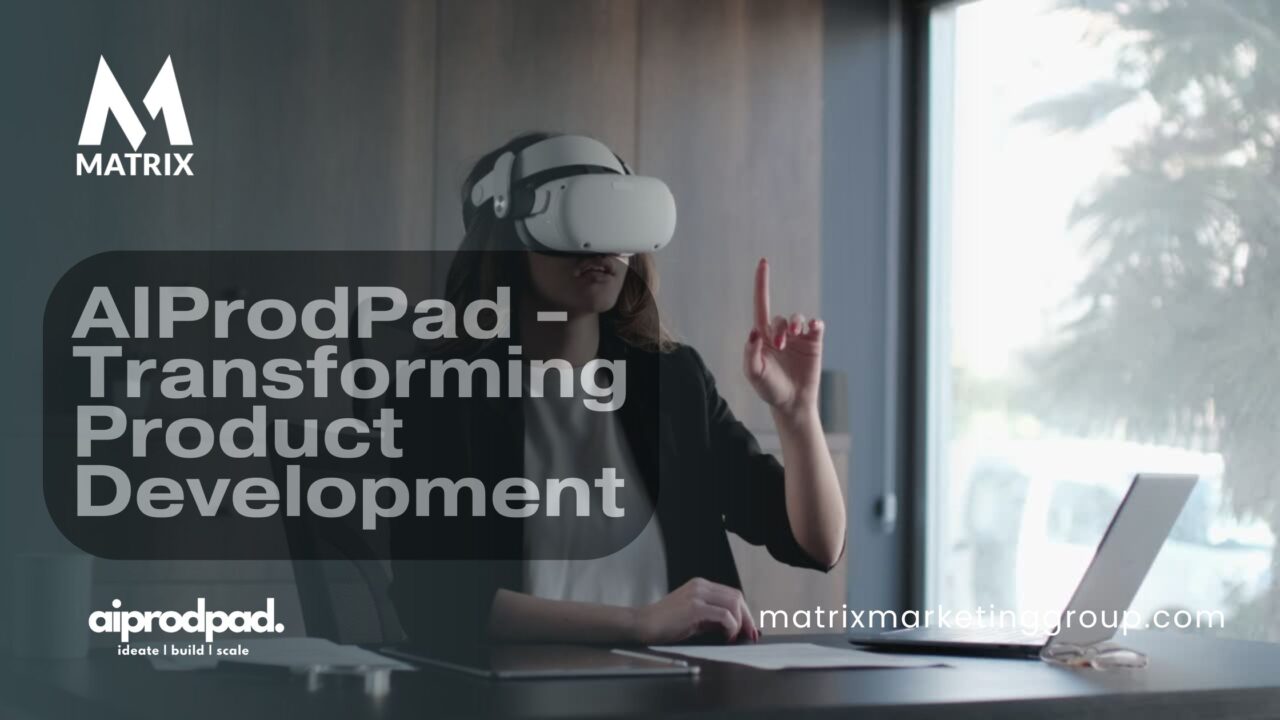AIProdPad Product Development Transformation with AI-enhanced efficiency and Precision
AIProdPad, an AI-powered product design and management tool, is at the forefront of this transformation.
In today’s fast-paced, highly competitive market, product development teams face increasing pressure to innovate quickly while managing resources effectively.
The demand for smarter, faster, and more efficient product design and management processes has led to a surge in AI-driven solutions that promise to revolutionize how products are conceived, developed, and brought to market.
Sarah’s Missed Opportunity:
Sarah had always prided herself on her attention to detail as a product manager. She had spent months developing a new advanced manufacturing workflow system that promised to streamline operations and boost efficiency.
She collaborated with engineers, talked to stakeholders, and meticulously outlined every feature she thought would benefit the end users.
When the product finally launched, she expected rave reviews. Instead, the feedback was lukewarm, even critical. Users felt the system needed to be simpler, the features didn’t quite meet their needs, and the solution missed key pain points they had hoped to address.
Sarah was baffled. She had followed her usual process—what had gone wrong?
Your B2B Tech Metrics
Enter your current 12-month averages to analyze your growth potential.
Your Marketing Analysis
Marketing-Sourced Pipeline
Sales Cycle Length
Lead-to-SQO Conversion
Anonymous Visitor Intelligence
*Goal re-defined as ‘Visitors to Identified Accounts’
Close Your Performance Gap
Matrix Marketing Group combines AI technology with expert services to turn these goals into reality.
Book a Strategy CallAfter weeks of frustration, Sarah stepped back and analyzed what had happened. It became clear that despite all her efforts, she had misunderstood the customer’s core needs. The features she and her team had focused on weren’t the ones that would solve the most pressing issues. The disconnect between the customer and the product was glaring.
If only she had used AIProdPad.
With AIProdPad, Sarah could have avoided this misstep. The AI-driven tool would have analyzed real-time customer data, identifying the most important features based on feedback and market needs.
It would have suggested adjustments before the product was even developed, ensuring alignment between customer demands and the product’s feature set. No more guesswork, no more missed opportunities.
Instead of trying to interpret feedback manually and relying on assumptions, AIProdPad could have given Sarah data-backed insights that pinpointed exactly where the market opportunity was and what users truly needed.
It would have highlighted which essential features could be deprioritized, saving time and resources.
Had Sarah used AIProdPad, the workflow system would have been launched precisely and perfectly tailored to the customer’s needs.
Instead, she had to face the hard truth: she had missed the mark, and the disconnect between her vision and the customer’s expectations had cost her product’s success.
Next time, Sarah wouldn’t make the same mistake. She knew now that AIProdPad was the missing piece that could elevate her role as a product manager and ensure her future projects hit the mark every time.
70% of agencies need help integrating AI solutions.
70% of agencies need help integrating AI solutions into their tech stack, citing a lack of interoperability as a major barrier. 85% of marketing agencies need more in-house expertise to manage and deploy multi-AI agent systems effectively.
AIProdPad, an AI-powered product design and management tool, is at the forefront of this transformation.
AIProdPad is designed to accelerate innovation, foster seamless collaboration, and drive operational efficiency for product development teams.
By leveraging cutting-edge AI algorithms, real-time collaboration tools, and predictive analytics, AIProdPad helps organizations streamline their product lifecycle from ideation to market launch.
It empowers product managers, designers, engineers, and executives to make data-driven decisions, ensuring that products are delivered on time, on budget, and with the highest quality.
This white paper will explore AIProdPad’s unique positioning, target industries, and audience and how it can optimize product development processes across various sectors.
We will also provide actionable insights into how organizations can implement AIProdPad to achieve tangible improvements in product innovation, time to market, and cross-functional collaboration.
What is a Market Requirement Document (MRD)?

A Market Requirements Document (MRD) is a strategic document used by product managers to define the market needs, target customers, and key features that a product must have to succeed. AIProdPad creates these in a snap. Whether you have a private LLM model or are publicly available, we can get you up and running fast.
Our AI Branch Model is industry-designed to get a quicker return with less implementation hassle.
It is a blueprint that aligns product development with market demands and business goals.
The MRD answers a product’s “what” and “why” questions, focusing on the problem the product solves, the target market, and the value it offers.
Key Components of an MRD:
- Market Opportunity: Defines the size, scope, and growth potential. It identifies the problem the product will solve and validates the opportunity based on market research and competitive analysis.
- Target Audience: This specifies the ideal customer segments, including demographic, psychographic, and behavioral data. It often includes buyer personas to help development and marketing teams understand potential users’ needs and motivations.
- Competitive Landscape: Provides an analysis of competitors, highlighting their strengths, weaknesses, market position, and pricing strategies. This ensures the product will stand out and address gaps in the market.
- Customer Needs and Pain Points: This section describes the problems and challenges customers face that the product aims to resolve. Understanding the “pain points” helps ensure the product is designed to meet real-world needs.
- Product Features and Prioritization: This section outlines the key critical features for addressing market needs and solving customer pain points. The MRD prioritizes these features based on customer demand, business value, and technical feasibility.
- Positioning and Value Proposition: Establishes how the product will be positioned in the market, including its unique selling proposition (USP). It also explains the benefits the product will provide to the target audience.
- Success Metrics: Identifies the key performance indicators (KPIs) and metrics to measure the product’s success post-launch, such as customer satisfaction, market penetration, or sales growth.
How AIProdPad Helps in Crafting an MRD:

AIProdPad is an AI-driven product management tool that enhances the creation and execution of MRDs by automating data collection, analysis, and recommendation processes.
Here’s how it helps:
1. Market Research and Opportunity Identification:
- AIProdPad can gather and analyze large volumes of market data in real time, such as customer reviews, social media trends, and competitor movements, to identify market gaps and emerging opportunities.
- It uses predictive analytics to forecast market trends and size, helping product managers define clear market opportunities in the MRD based on data-backed insights.
2. Target Audience Analysis:
- AIProdPad builds detailed customer personas by analyzing demographics, purchasing behavior, and online activity. This ensures that the MRD accurately reflects potential buyers’ needs and preferences.
- It can segment the market into distinct groups, allowing for more precise targeting in the MRD, ensuring that features are tailored to specific customer segments.
3. Competitor and Trend Analysis:
- AI-driven insights from AIProdPad allow product managers to track competitor products, features, and pricing strategies in real-time. They also help identify gaps in competitors’ offerings that can be exploited.
- AIProdPad provides insights on emerging trends, allowing the MRD to be forward-looking and innovative in defining product features.
4. Customer Needs and Feature Prioritization:
- AIProdPad uses customer feedback, surveys, and social listening tools to determine the top pain points and needs that should be addressed in the product. This helps product managers prioritize the most critical features in the MRD.
- It also enables feature prioritization based on real-time data, ensuring that high-demand features are given top priority in the product roadmap.
5. Value Proposition and Positioning:
- AIProdPad can analyze customer sentiment and competitive positioning to craft a compelling value proposition. It helps product managers understand how customers perceive existing solutions and how to position the product to fill market gaps.
- By leveraging customer behavior insights, the tool ensures that the MRD articulates a clear and unique value proposition that resonates with the target market.
6. Data-Driven Metrics for Success:
- AIProdPad can define realistic success metrics by analyzing historical product launches, market conditions, and performance data from similar products.
- It offers ongoing monitoring capabilities, allowing the product manager to update and refine the MRD’s success metrics as market conditions evolve.
Additional Benefits of AIProdPad for MRDs:
- Speed and Efficiency: Automates research and analysis tasks, drastically reducing the time required to collect market data and customer insights, allowing for quicker MRD development.
- Dynamic Updates: AIProdPad continuously monitors market conditions and competitor actions, ensuring the MRD can be updated dynamically to reflect real-time changes in the market.
- Collaboration and Communication: AIProdPad fosters collaboration between product managers, engineers, and marketers by providing a platform where everyone can access the MRD and see the data behind key decisions. This reduces miscommunication and keeps all teams aligned.
The MRD is a vital document in product management that bridges market needs with product development.
With AIProdPad, product managers can create MRDs that are faster to develop and more accurate, data-driven, and aligned with real-time market dynamics.
By leveraging AI’s ability to analyze massive amounts of data and provide actionable insights, AIProdPad ensures that products are designed with a clear understanding of market demands, customer needs, and competitive positioning.
This leads to more successful product launches and sustained market leadership.
A Product Requirements Document (PRD) is a detailed document that outlines the product’s features, functionality, user experience, and technical specifications.
It acts as a blueprint for the development team, ensuring everyone involved in product creation understands what needs to be built, how it should work, and the business goals it aims to achieve.
The PRD is essential in product management because it aligns cross-functional teams (engineering, design, marketing, etc.) and guides the development process from concept to delivery.
Key Components of a PRD:
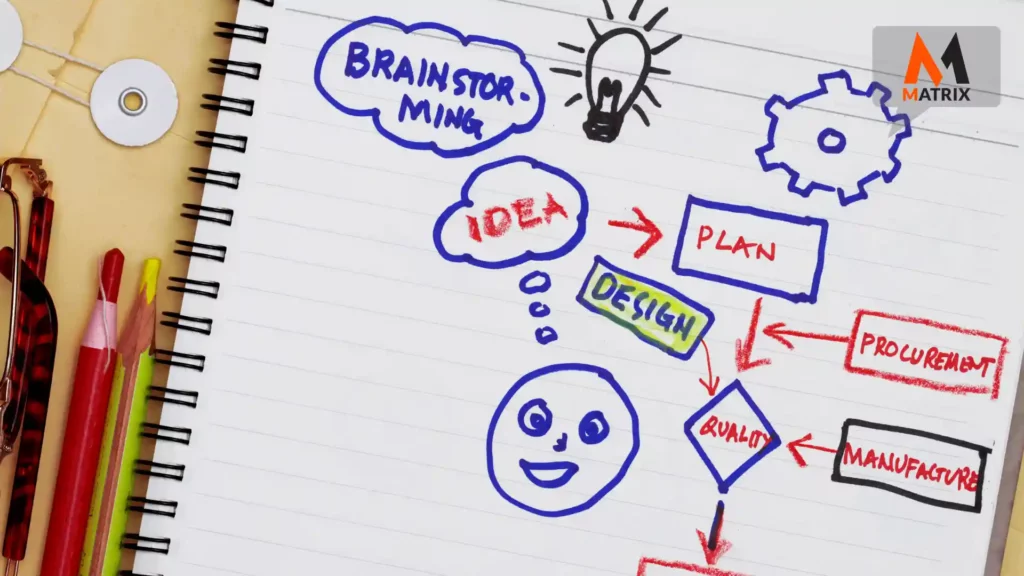
- Product Overview and Objectives:
- Describes the product’s purpose, the business problem it solves, and the high-level goals.
- This provides context for why the product or feature is being built and how it aligns with the company’s overall strategy.
- Target Audience and Use Cases:
- Identifies who the users are, what their needs are, and how they will interact with the product.
- Includes detailed user personas, scenarios, and specific use cases that define the key functions the product must support.
- Features and Functional Requirements:
- Breaks down the product’s core features and the specific functionalities it must have.
- Each feature is described in detail, including what it does, how users will interact with it, and the expected behavior.
- Prioritizes features, indicating which are critical (must-have) and which are nice-to-have or optional.
- User Experience and Design Requirements:
- This section details the user interface (UI) and user experience (UX) expectations, ensuring that the product is easy to use and meets the target audience’s needs.
- This includes wireframes, prototypes, or visual designs that clearly show how the product will look and feel.
- Technical Requirements:
- Specifies the technical aspects of the product, such as platform dependencies, architecture, APIs, and third-party integrations.
- Outlines performance metrics, scalability needs, security protocols, and other engineering constraints or specifications.
- Non-Functional Requirements:
- Describes performance, scalability, reliability, security, and maintainability, which are not directly related to user features but are essential to the product’s overall success.
- Milestones and Timeline:
- Defines the project’s timeline, key milestones, and delivery deadlines, including design, budgets, development, testing, and deployment stages.
- Success Metrics and KPIs:
- Identifies the key performance indicators (KPIs) and metrics that will be used to measure the success of the product or feature post-launch, such as user adoption, engagement, or revenue impact.
What is a Product Requirement Document (PRD)?
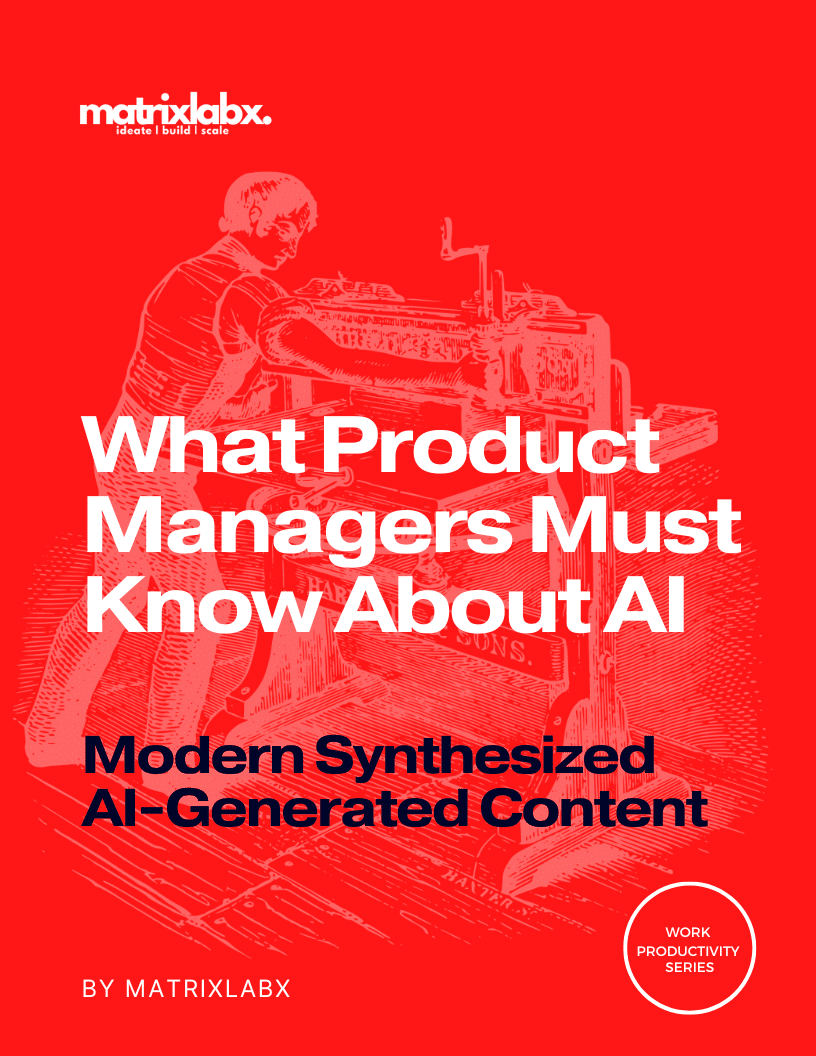
How AIProdPad Helps with the PRD Process:
AIProdPad is an AI-driven product management tool that enhances every step of creating a PRD.
By automating research, analysis, and insight generation, AIProdPad ensures that the PRD is comprehensive and grounded in data, leading to more accurate and user-centered product development.
1. Data-Driven Feature Prioritization:
- AIProdPad analyzes user feedback, market trends, and competitor offerings to recommend which features should be prioritized in the PRD. This ensures that the most valuable and impactful features are built first.
- AI-powered analysis provides evidence-based reasoning for prioritization, helping avoid internal biases or assumptions during feature selection.
2. Automated User Persona and Use Case Generation:
- AIProdPad can automatically generate user personas and use cases based on real-world data such as user behavior, demographics, and interaction history. This ensures that the PRD is tailored to user needs and behavior patterns.
- It continuously monitors user feedback and adjusts the personas and use cases in real time, ensuring the PRD remains aligned with current market demands.
3. Predictive Technical Requirements:
- AIProdPad assists in defining technical requirements by analyzing similar products, existing infrastructure, and scalability needs. It can predict which technical constraints (e.g., security, data storage, integration issues) will likely arise during development.
- By providing predictive insights, AIProdPad helps the product team anticipate potential risks and dependencies, allowing for better preparation in the PRD.
4. Enhanced User Experience Design Insights:
- Through AI-driven user behavior analysis, AIProdPad provides suggestions for UI/UX design improvements, ensuring the product is intuitive and aligned with best practices.
- It can simulate different user interactions, providing insights into what design choices will best resonate with the target audience and offering data-backed recommendations for improving user experience.
5. Real-Time Competitive Analysis:
- AIProdPad continuously monitors competitors’ products, features, and updates, providing insights into your product’s position.
- This real-time data allows the PRD to stay relevant by incorporating features or improvements that differentiate the product from its competitors.
6. Optimizing Non-Functional Requirements:
- AI-driven analysis ensures that non-functional requirements such as performance, reliability, and scalability are well-defined based on data from similar systems and market benchmarks.
- AIProdPad predicts future growth or load conditions, ensuring the product is built to handle expected demands and preventing future bottlenecks or performance issues.
7. Milestones and Agile Workflow:
- AIProdPad integrates with agile project management tools and helps define milestones, timelines, and workflows by analyzing past projects and product roadmaps. It can recommend timelines based on complexity and resource availability.
- It ensures that development is broken down into achievable, time-bound phases, keeping teams on track for delivery.
8. Success Metrics and Continuous Monitoring:
- AIProdPad analyzes historical data and customer behavior trends to help define KPIs and success metrics. It suggests realistic goals for product adoption, engagement, and financial performance.
- After launch, it can continuously monitor product performance and suggest improvements, turning the PRD into a living document that evolves with the product’s lifecycle.
The Product Requirements Document (PRD) is crucial for aligning teams and guiding product development.
AIProdPad enhances the creation of PRD by leveraging AI to automate and optimize research, feature prioritization, and technical specification generation.
It ensures that the PRD is grounded in real data and market insights, making the product development process more efficient, customer-focused, and aligned with business objectives.
Using AIProdPad, product managers can produce higher-quality PRDs, leading to better products, shorter development cycles, and improved customer satisfaction.
2. AIProdPad Unique Positioning
AIProdPad stands out from other product management tools because it uses AI technology comprehensively and seamlessly integrates with existing workflows.
Its unique features empower product development teams to make informed decisions, anticipate challenges, and collaborate more effectively across departments.
Here’s how AIProdPad differentiates itself:
AI-Driven Product Management
The core of AIProdPad’s offering is its AI-driven approach to product management. Traditional product development relies heavily on manual processes, intuition, and fragmented data sources.
AIProdPad uses advanced algorithms to automate and optimize various product lifecycle stages. From ideation to market launch, AIProdPad helps teams streamline their workflows by providing:
- Automated prioritization: AIProdPad analyzes customer feedback, competitor activity, and market trends to help product managers prioritize features most likely to succeed.
- Risk assessment: The platform identifies potential risks, such as cost overruns or technical bottlenecks.
- Resource optimization: AIProdPad ensures efficient resource allocation by analyzing project timelines, team capacity, and budget constraints.
This AI-driven approach reduces the margin of error, minimizes delays, and ensures that product teams are always working on the most impactful features.
By breaking down silos and fostering collaboration across departments, AIProdPad ensures that product teams can move quickly and efficiently through the development cycle.
Intelligent Predictive Features
One of the most powerful features of AIProdPad is its ability to predict challenges and opportunities before they arise.
The platform uses machine learning models to analyze past project data, industry trends, and user behavior, providing predictive insights that help teams stay ahead of the curve.
Key predictive features include:
- Bottleneck detection: AIProdPad identifies potential bottlenecks in the development process—whether related to resource constraints, technical challenges, or team performance—and provides recommendations to mitigate them.
- Cost forecasting: The platform predicts cost overruns by analyzing historical project data and comparing it with current development metrics.
- Market trend analysis: AIProdPad continuously monitors market trends and competitor activity, allowing product teams to adjust their strategies quickly and capitalize on emerging opportunities.
These predictive capabilities give product teams a competitive edge, enabling them to deliver high-quality products faster and with fewer setbacks.
Data-Driven Insights
AIProdPad excels in providing data-driven insights that inform better decision-making throughout the product lifecycle.
The platform collects and analyzes a wide range of data, including user feedback, competitor activity, and market trends. Key insights delivered by AIProdPad include:
- Customer preferences: AIProdPad helps teams prioritize features that align with user needs by analyzing customer feedback and usage patterns.
- Competitive analysis: The platform tracks competitors’ product releases, pricing strategies, and feature sets, helping teams stay competitive.
- Performance metrics: AIProdPad provides detailed performance metrics on project timelines, team efficiency, and product quality, allowing teams to improve their processes continuously.
With these insights, product teams can make informed decisions that lead to better products and more successful launches.
3. Target Industries

AIProdPad is designed to be industry-agnostic, making it a valuable tool for many sectors.
Its AI-driven features, predictive analytics, and customizable workflows make it particularly well-suited to the following industries:
Technology
Rapid innovation is key to staying ahead of the competition in the technology sector.
AIProdPad enables tech companies to manage complex product roadmaps, track user stories, and release features promptly.
Its AI-driven insights help teams prioritize the features that will most impact their users and the market.
Additionally, AIProdPad’s real-time collaboration tools make it easy for distributed teams to work together, ensuring that projects stay on track even when teams are spread across different time zones.
Orchestrate interactions that provide specific forms of help across the full customer journey autonomously. With three sets: New Neldentifyeds, Aid Self-Learning, and Foster Connection. Learn More.
Manufacturing
Manufacturing companies often deal with long product development cycles that involve multiple teams, departments, and external partners.
AIProdPad facilitates collaboration across these groups, ensuring everyone works towards the same goals.
Its predictive features help identify potential production bottlenecks and supply chain issues before they become major problems, reducing delays and cost overruns.
AIProdPad helps manufacturing companies bring products to market faster and more efficiently by streamlining the design, prototyping, and production phases.
Consumer Goods
The consumer goods industry is highly competitive, with companies constantly striving to bring new products to market that meet evolving consumer preferences.
AIProdPad supports the entire product lifecycle, from concept development and market research to prototyping and production. Its AI-driven insights help companies identify trends and preferences that can inform product development.
At the same time, its collaboration tools ensure that marketing, design, and engineering teams are aligned throughout the process.
Healthcare
In the healthcare industry, product development cycles are often long and complex due to regulatory requirements and the need for rigorous testing.
AIProdPad streamlines these processes by providing tools for compliance tracking, collaboration, and risk management.
Its predictive features help healthcare companies anticipate potential issues early in the development cycle, allowing them to adjust before affecting timelines or budgets.
Whether developing medical devices, health technologies, or pharmaceutical products, healthcare companies can use AIProdPad to improve efficiency and reduce time-to-market.
Automotive
The automotive industry involves managing complex product designs, global manufacturing collaborations, and tight regulatory standards.
AIProdPad is ideal for automotive companies managing multiple design iterations, engineering changes, and supplier relationships.
Its real-time collaboration features allow teams across different regions to work together seamlessly.
At the same time, its AI-driven insights help automotive companies make data-driven decisions about features, safety standards, and production timelines.
Other industries:
- Artificial Intelligence
- Sustainability
- Industrial Internet of Things
- Advanced Robotics
- Immersive Technology
- Additive Manufacturing
- Cloud Computing
- Cybersecurity
4. Target Audience
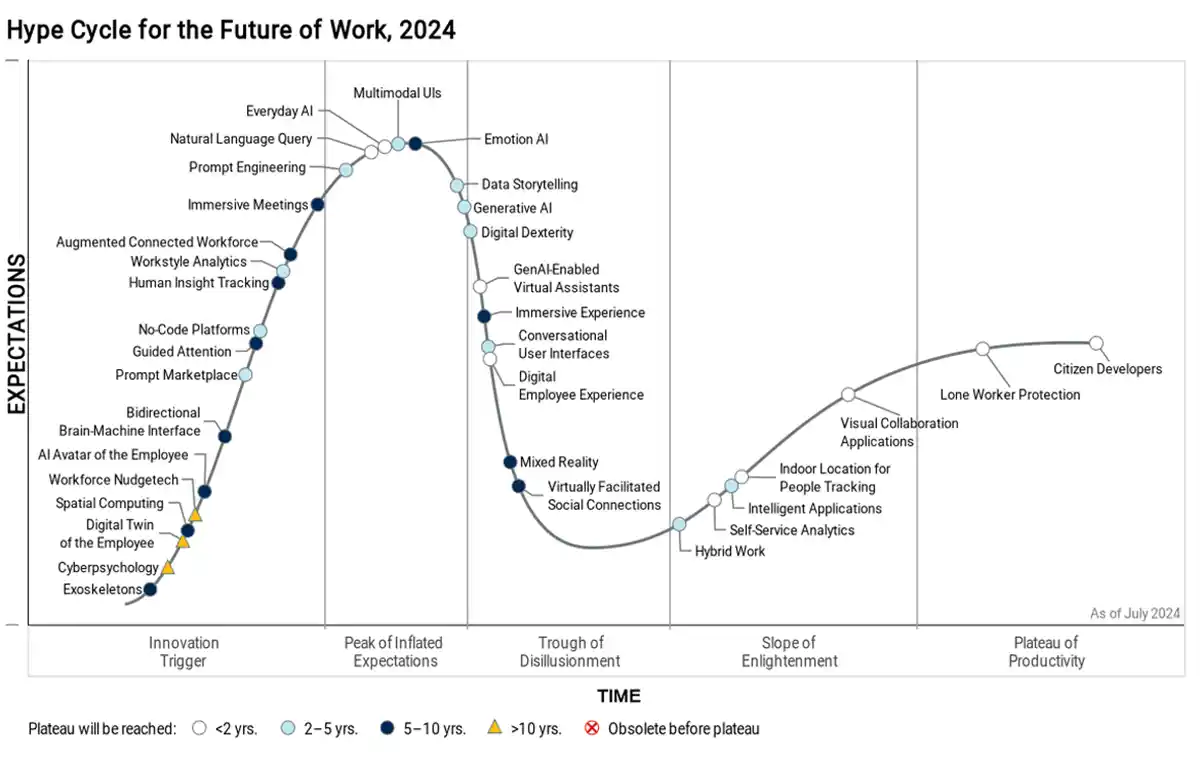
AIProdPad is designed to meet the needs of a wide range of product development professionals, from product managers and designers to C-suite executives and marketing teams.
Its comprehensive feature set makes it an indispensable tool for the following audiences:
Product Managers
Product managers oversee the entire product lifecycle, from ideation to launch.
AIProdPad provides them the tools to manage roadmaps, prioritize features, and track development progress.
Its AI-driven insights help them decide which features to prioritize.
At the same time, its real-time collaboration tools ensure that everyone on the team is aligned and working towards the same goals.
Designers & Engineers
Designers and engineers are key players in product development and are responsible for turning concepts into reality.
AIProdPad provides these teams with collaboration tools to share ideas, designs, and feedback throughout the product lifecycle.
Its predictive features help designers and engineers anticipate potential technical challenges, allowing them to address issues before they impact the final product.
C-Suite Executives
C-suite executives need access to high-level insights that help them make strategic decisions about product development and resource allocation.
AIProdPad provides executives with actionable insights through its analytics dashboards, which track key performance indicators (KPIs) related to product performance, timelines, and budgets.
These insights allow executives to make informed decisions about which products
prioritizing which teams to invest in and where to allocate resources.
Marketing Teams
Marketing teams play a critical role in a product launch’s success.
AIProdPad helps marketing teams coordinate product launch plans, ensuring they align with the product development team’s timeline and goals.
Its collaboration features allow marketing teams to stay connected with product managers, designers, and engineers throughout development, ensuring everyone works towards a successful launch.
Businesses spend nearly 30% of their total marketing budget on content creation alone—yet 60-70% of this content often goes unused due to inefficiencies or misalignment with strategy. Get Content Pricing Instantly.
5. How to Use AIProdPad
AIProdPad is designed to be easy to implement and use. Its range of features can be customized to meet the needs of any product development team.
Here’s how organizations can get started with AIProdPad and make the most of its capabilities:
Onboarding & Customization
The first step in using AIProdPad is setting up your workspace and customizing the platform to fit your team’s needs.
AIProdPad offers industry-specific templates that make it easy to get started and customizable workflows that can be adapted to fit your team’s preferred project management methodology, whether Agile, Scrum, or Kanban.
AI-Driven Planning
Once your workspace is set up, you can use AIProdPad’s AI-driven algorithms to prioritize product features based on customer data, market trends, and competitor analysis.
This allows product managers to make data-informed decisions about which features to focus on, ensuring that the team always works on the most impactful initiatives.
Collaboration & Feedback Loop
AIProdPad’s real-time collaboration features make it easy for teams to work together throughout product development.
Designers, engineers, and product managers can share ideas, designs, and feedback in a shared digital workspace, reducing the time spent on revisions and iterations.
Product Roadmap
One of AIProdPad’s most powerful features is its product roadmap tool, which allows teams to build, share, and maintain flexible roadmaps that can adapt to changes.
This ensures all stakeholders are aligned on the product’s goals and timeline and everyone is working towards the same objectives.
Analytics & Reporting
AIProdPad provides AI-driven insights into product development progress, potential risks, and performance metrics.
These insights help teams stay on track, identify areas for improvement, and ensure that the product is delivered on time and within budget.
Integration & Scalability
AIProdPad integrates many popular tools, including project management, CRM, and ERP systems.
This makes connecting AIProdPad with existing workflows easy and ensures that your team always works with the most up-to-date information.
The Holistic Marketing Management Framework
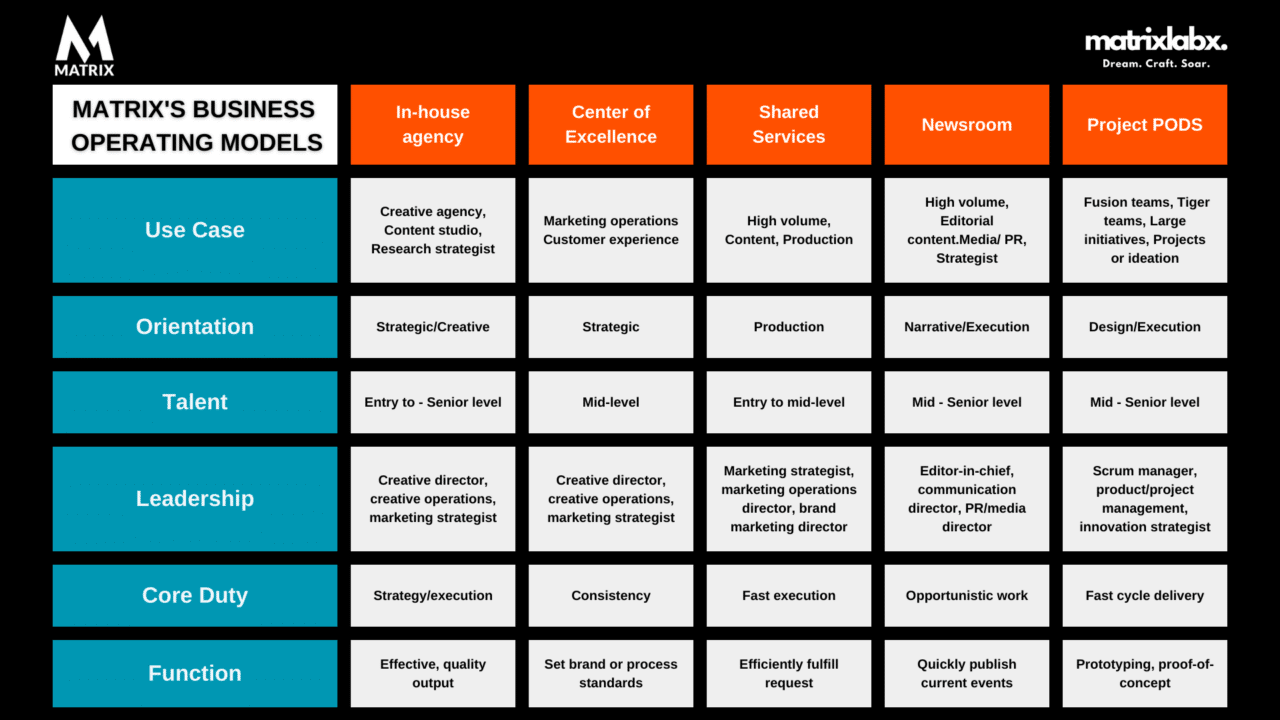
To transform product development through AI-driven innovation and AI agents like AIProdPad, AIBrandPad, and AIContentPad, the strategy must focus on integrating these tools into every phase of the product lifecycle, from ideation to execution.
Here’s how we can approach this:
1. Ideation and Market Research:
- AIProdPad can help identify unmet customer needs, predict market trends, and refine product ideas by analyzing large volumes of market data, customer feedback, and social media trends.
- It can simulate different product concepts, test hypothetical scenarios, and predict their market success.
- AI agents can perform competitor analysis and identify gaps in existing solutions that present opportunities for new products.
2. Product Design and Concept Development:
- AIProdPad will be critical in developing product prototypes. It will provide insights into optimal designs, features, and user experience (UX) elements based on user preferences and data-driven analysis.
- AI-driven modeling can optimize designs for manufacturability, cost-efficiency, and sustainability while minimizing time-to-market.
- Integrating AI into creative processes with AIBrandPad ensures the product aligns with branding, customer expectations, and market positioning from the earliest stages.
3. Content and Communication Strategy:
- AIContentPad can generate content that aligns with the product vision, including everything from product descriptions to technical documentation.
- AI can also assist in creating tailored marketing messages, ad campaigns, and outreach strategies by understanding customer personas and generating relevant content for different segments.
- This tool accelerates time-to-market by automating content creation while ensuring tone and brand messaging consistency.
4. Product Roadmapping and Innovation Cycle:
- AIProdPad helps build dynamic product roadmaps by predicting changes in market demands, customer preferences, and competitor actions. AI agents can continuously analyze evolving data and recommend adjustments in the roadmap, ensuring the product remains relevant.
- AI facilitates continuous innovation by identifying new feature opportunities based on customer interactions, product feedback, and data insights.
5. Customization and Personalization:
- AI-driven agents like AIProdPad can assist in developing products that are more customizable or personalized. They can recommend modular design approaches, where customers can configure products according to their preferences.
- AIBrandPad can ensure personalized branding experiences that adapt to regional markets, cultural differences, or specific demographics.
- AIContentPad can tailor marketing campaigns for specific audiences, enhancing customer engagement by delivering relevant real-time content.
6. Efficiency in Product Development Processes:
- Leveraging AI agents can accelerate time-consuming aspects of product development, such as design iteration, prototyping, and feedback analysis.
- AI tools can provide real-time insights and facilitate communication between development teams, making the development cycle more efficient and collaborative.
- Predictive maintenance for production systems and AI-driven quality assurance improve overall product quality while reducing costs associated with defects and downtime.
7. Data-Driven Decision Making:
- AI will drive product decision-making processes. AIProdPad can continuously collect and analyze data from prototypes, customer testing, and real-time usage, allowing teams to make informed, evidence-based decisions.
- This reduces guesswork and increases the probability of product success by eliminating biases and ensuring decisions are backed by accurate, comprehensive data.
8. Scalability and Agile Product Management:
- With AI, product development becomes more scalable. AI agents can quickly adapt processes to accommodate increased demand, shifting priorities, or unforeseen market changes.
- AIProdPad supports agile methodologies by enabling rapid prototyping, real-time data collection, and instant feedback loops, allowing teams to pivot faster when needed.
- AIBrandPad helps scale brand consistency across multiple regions and markets while allowing for localized adaptations, smoothing global rollouts.
9. Post-Launch Monitoring and Updates:
- AI agents monitor real-time user feedback, product performance, and market reception post-launch. AIProdPad analyzes this data to suggest product enhancements or updates based on customer behavior and satisfaction levels.
- AI agents can automate parts of customer support, generate solutions for common issues, and feed this data back into the development cycle to continuously improve the product.
10. Cost Optimization and ROI Tracking:
- AI-driven processes reduce the need for manual work, accelerating development timelines and minimizing the costs associated with errors, rework, and delays.
- AIProdPad can optimize the entire product development cycle by identifying cost-saving opportunities without sacrificing product quality.
- Using data from AIContentPad and AIBrandPad, teams can track ROI for marketing and content initiatives and ensure that the investment in product marketing is yielding maximum returns.
Transforming Product Development for the Future
By adopting AI-driven innovation and AI agents, product development becomes faster, more efficient, and data-backed, which results in better products aligned with market demands.
The integration of tools like AIProdPad, AIBrandPad, and AIContentPad ensures that products are not only developed faster but also designed and communicated more intelligently to meet the needs of modern customers.
These platforms unlock opportunities for customization, real-time feedback, and agile responses to market dynamics, setting the stage for a new era of product innovation.
As a product manager, the key is to harness the power of AI to continuously improve and innovate in product development, reducing risks while increasing customer satisfaction and business success.
Branch Models: Unlocking Scalable Growth
In the age of digital transformation, marketing managers are constantly seeking innovative ways to stay competitive and relevant. But how? Watch the video!
6. Conclusion
AIProdPad is a transformative AI-driven platform that enhances product development, collaboration, and decision-making.
Its unique combination of AI-driven insights, real-time collaboration features, and customizable workflows makes it an invaluable tool for product teams across various industries.
By streamlining the product lifecycle, reducing risk, and enabling better decision-making, AIProdPad helps organizations bring high-quality products to market faster and more efficiently.
To experience AIProdPad’s full capabilities, sign up for a demo or free trial today and see how it can transform your product development process.
This white paper details AIProdPad’s key strengths, target users, and industry applicability, providing a comprehensive look at how this AI-powered tool can enhance product development in various sectors.
Applications of AI in Marketing
Generative AI: Tools like ChatGPT, Gemini, and OrchestraAI are being utilized for content creation, with 42% of marketers employing AI for keyword research and 39% for social media and email marketing. Learn More.

